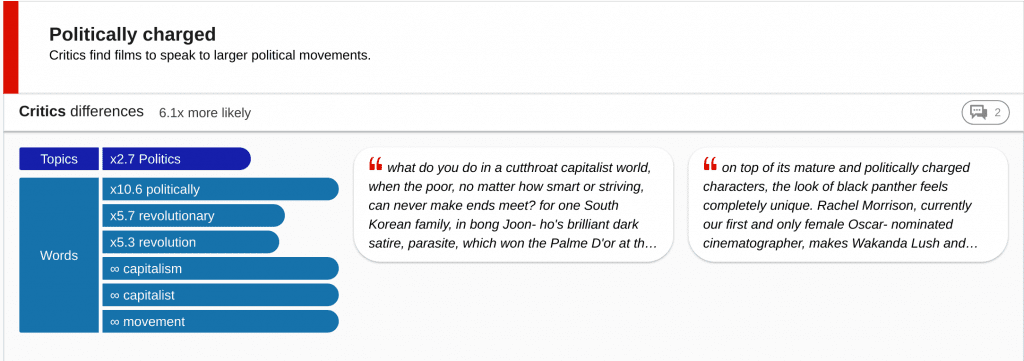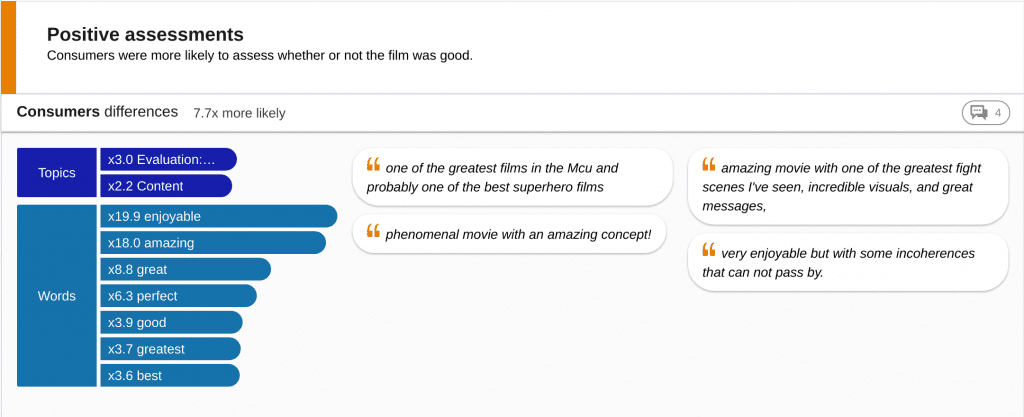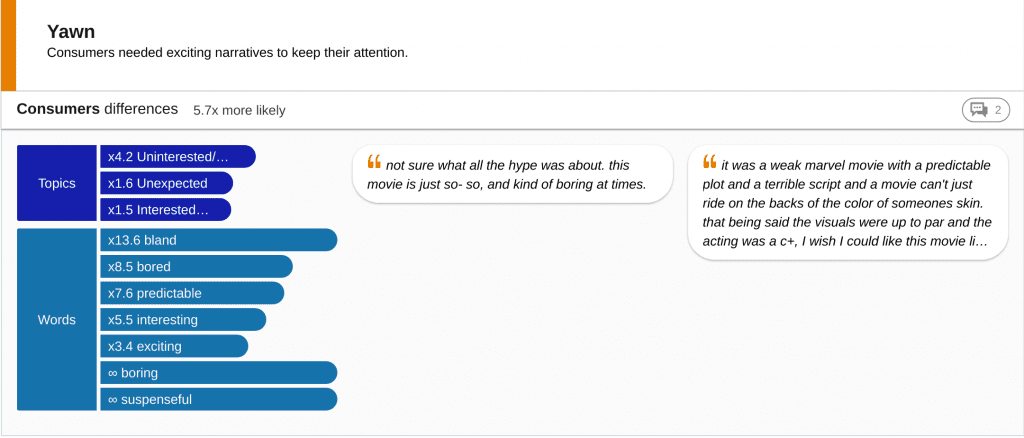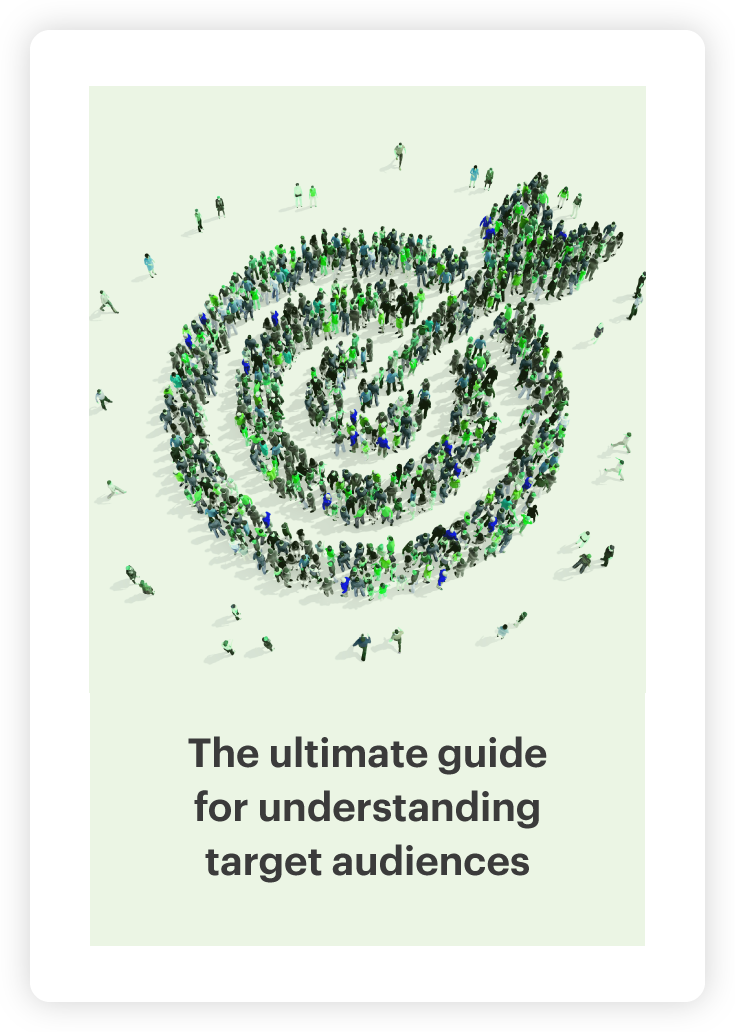Should we trust critics’ movie reviews?

We’ve all watched a movie because it had good reviews, and we’ve all been disappointed by at least one that didn’t live up to the hype. Obviously we know that cinematic tastes and preferences vary from individual to individual, but yet we often rely on the opinions of a small group of professionals to tell us whether we should watch something or not. These movie critics are well-respected and knowledgeable, but should we take their assessments with a pinch of salt?
That’s where Relative Insight comes in. Text analysis is the perfect tool to understand if public response echoes critic opinion. Relative Insight uses comparison methodology to uncover the similarities and differences between two sets of language data (aka anything with words).
In this case, we compiled a document of movie reviews taken from Rotten Tomatoes. After uploading nearly 200,000 words to the platform, we used Relative Insight to pinpoint the topics, words, phrases, grammar and emotion unique to reviews written by critics, and compared those to the reviews left by the movie-going public. Here’s what we found:
Critics
Critics avoided straight-forward assessments of films, favouring descriptive reports of the narrative and character portrayals, and we saw a diverse set of descriptive words ranging from grizzled to gargantuan. You won’t see a critic calling a movie ‘good’ or ‘bad’, but you will see them using adjectives to describe the film, its setting, characters, and the critic’s viewing experience.

Our analysis saw critics exploring and noting the literary devices used throughout the film. They were able to recognize techniques like metaphor, allegory and narrative employed by writers and directors. These literary devices result in deeper meaning and garnered positive responses from critics.
Critics also recognized when films spoke to larger political or social movements. Reviews often mentioned the impact of a narrative on audiences in the context of current events. Films that succeeded in this challenge were favoured by critics.

We found critics more likely to give directors and actors recognition for their performance or contribution to a film, and we also noticed how they stepped outside the fictional universe of the movie to evaluate the cast and crew by name – where normal audiences were more likely to use character names in their assessments. The selection of movie reviews we analyzed featured names like Paul Rudd, Brie Larson, Robert Downey Jr. and Lupita Nyong’o.
Consumers
Audience film reviews gave shorter, to the point analysis of films often relying on simple adjectives like good or bad, and these public reviewers often had very definite opinions on films. But these opinions from consumers varied greatly. While critics typically agreed on a film’s assessment, public opinion spanned a wide spectrum of judgement.


Consumers seek excitement and suspense from a film. When a movie kept viewers on the edge of their seats, it was noted in the review. When a film failed to grab the viewer’s attention, it was their largest critique. This element could make or break a movie in the eyes of the viewer.

All’s well that ends well, right? Consumers valued the movie’s ending most over all other cinematic elements, using words like end and final. If the film’s finale failed to offer a satisfying or shocking resolution, viewers were likely to be disappointed.
Critics and consumers used different written language and techniques when reviewing movies. While critics provided detail and in-depth analysis, consumers used fewer words and simpler language to relay their opinions.
This use of text analysis to compare audiences can be applied to a range of industries and demographics. Relative Insight analyzes any data set that contains words, including reviews, social media, forums and so much more.
Our technology works with existing metadata points to break down responses by different demographics including age or location, and these insights can uncover the unique opinions and preferences of a target audience, leading to powerful communications and marketing strategies.
Sign up to attend our upcoming webinar event “Are you passing the vibe check? How to talk to Gen Z” – if you can’t make it, register anyway and we’ll send you the recording.
Book a demo with our team to learn more.

